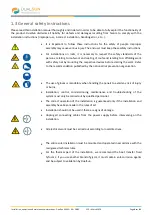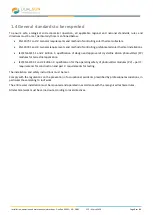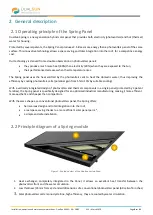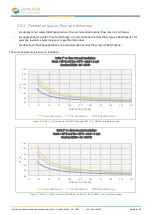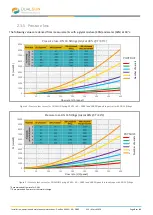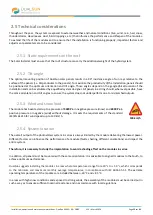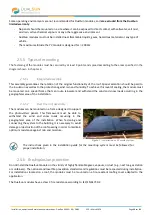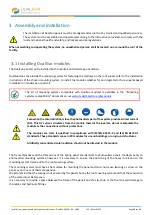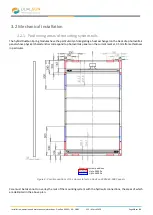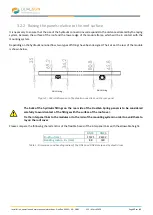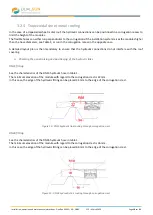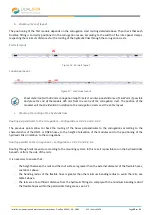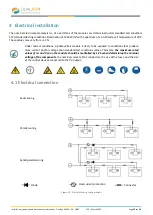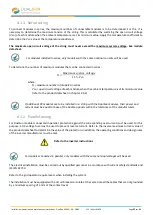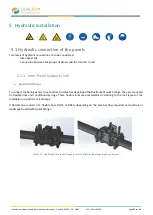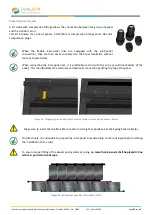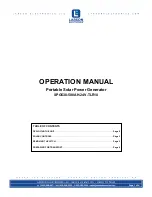
Installation, operation and maintenance instructions - DualSun XXXM
–
60
–
3BBP
V1.2
–
March 2020
Page
14
sur
41
3
Assembly and installation
The installation of DualSun panels must be managed and carried out by trained and qualified personnel.
The system must be assembled and operated according to the instructions provided, to comply with the
local and national health and safety, and risk prevention regulations.
When assembling and operating the system, no unauthorized person shall be located on or around the roof of the
facility.
3.1
Installing DualSun modules
The DualSun panels can be installed both in portrait and landscape orientation.
DualSun does not provide the mounting system for fastening the modules on the roof: please refer to the installation
instructions of the chosen mounting system, to install the modules whether for an integrated or for a superimposed
installation, in landscape or portrait.
The frame thickness and the dimensions of the Spring panel are identical to photovoltaic panels. It adapts easily to
photovoltaic mounting systems; however, it is necessary to ensure the positioning of the hoses in relation to the
mounting system frame and to the roof covering surface.
The mounting system must have a flat surface for mounting the panel and must not cause twisting or stress on the
panel, even in case of thermal expansion.
We also remind that the sealing is not ensured by the panels but by the roof covering system and that the evacuation
of the water must be foreseen.
It is necessary to provide a space between the frame of the panels and the structure or the floor to avoid damage to
the cables and hydraulic fittings.
The list of mounting systems compatible with DualSun modules is available i
n the
“Mounting
systems compatibility"
document
on our
website dedicated to professionals
Even when the solar radiation is low, the photovoltaic part of the system produces direct current
(DC). This DC current circulates from the module towards the inverter, do not manipulate the
module or the connections without protections.
The modules are class II qualified in compliance with IEC/EN 61215-2 and IEC/EN 61730-1
standards. These standards concern PV modules for use on buildings, or on ground structures.
Artificially concentrated solar radiation should not be directed to the module.




